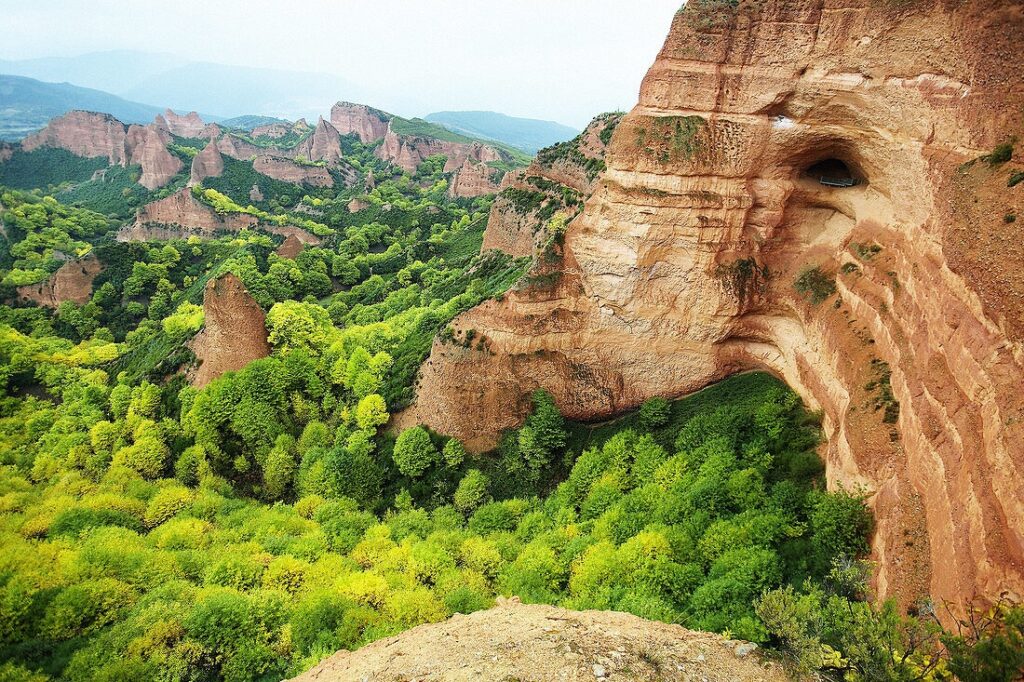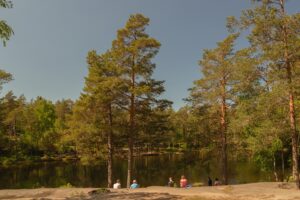Las Médulas in León: Ancient Roman Gold Mines
Nestled in the region of El Bierzo in León, Spain, Las Médulas is a breathtaking landscape that tells the story of ancient Roman ingenuity and ambition. Once the most significant gold mine in the Roman Empire, this UNESCO World Heritage Site is now a stunning natural park that offers visitors a glimpse into the past, surrounded by striking red earth formations and lush greenery.
What to See
Las Médulas is renowned for its unique landscape, characterized by jagged red peaks and deep green chestnut forests. The most iconic view is from the Orellán viewpoint, where you can see the vast expanse of the former mining area. The contrast between the red earth and the green vegetation is truly mesmerizing, especially at sunrise or sunset when the colors are most vibrant.
Visitors can explore several walking trails that wind through the park, each offering different perspectives of the landscape. The Senda de las Valiñas is a popular route that takes you through the heart of the mining area, passing by the Cuevona and La Encantada caves, which were carved out by the Romans. These caves are a testament to the scale of the mining operations and provide a fascinating insight into the techniques used by the Romans.
A Bit of History
Las Médulas was once the largest open-pit gold mine in the Roman Empire, operational from the 1st century BC to the 3rd century AD. The Romans used a technique called “ruina montium” (wrecking of mountains) to extract gold. This involved channeling water from nearby rivers to create powerful streams that would erode the mountains, revealing the gold within. It is estimated that the Romans extracted around 5,000,000 Roman pounds (approximately 1,650,000 kg) of gold from Las Médulas.
The mining operations drastically altered the landscape, creating the unique formations we see today. After the decline of the Roman Empire, the site was abandoned and gradually reclaimed by nature, resulting in the lush vegetation that now covers the area.
Interesting Facts and Visitor Tips
- Las Médulas was declared a UNESCO World Heritage Site in 1997 due to its historical significance and unique landscape.
- The area is home to a diverse range of flora and fauna, including chestnut trees, which were introduced by the Romans and are still harvested today.
- The best time to visit is in spring or autumn when the weather is mild, and the landscape is particularly beautiful with blooming flowers or autumnal colors.
- Guided tours are available and highly recommended for those interested in learning more about the history and geology of the area.
- Don’t forget to bring comfortable walking shoes, as the terrain can be uneven, and a camera to capture the stunning views.
How to Get There
Las Médulas is located about 25 kilometers southwest of the city of Ponferrada in the province of León. The most convenient way to reach Las Médulas is by car. From Ponferrada, take the N-536 road towards Carucedo, and follow the signs to Las Médulas. There is a parking area near the entrance to the park.
For those relying on public transport, buses run from Ponferrada to Carucedo, but services can be infrequent, so it’s essential to check the schedule in advance. From Carucedo, it’s a short taxi ride or a pleasant walk to Las Médulas.
First-time visitors should stop by the visitor center in the village of Las Médulas, where you can pick up maps, get information about the trails, and learn more about the site’s history.








